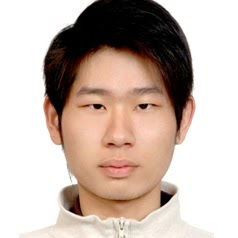Selected Papers from INNOV 2018
A special issue of Sensors (ISSN 1424-8220). This special issue belongs to the section "Internet of Things".
Deadline for manuscript submissions: closed (15 March 2019) | Viewed by 44767
Special Issue Editors
Interests: computer vision; digital forensics; information hiding; image and signal processing; data compression; information security; computer network; deep learning; bioinformatics
Special Issues, Collections and Topics in MDPI journals
Interests: vision-based automation; pattern recognition; color image processing; imaging systems
Special Issues, Collections and Topics in MDPI journals
Interests: Internet of Things; artificial intelligence/computational intelligence; cloud and edge computing; smart grid technology
Special Issues, Collections and Topics in MDPI journals
Special Issue Information
Dear Colleagues,
The Seventh International Conference on Communications, Computation, Networks and Technologies (INNOV 2018) will be held 14–18 October, 2018, in Nice, France (https://www.iaria.org/conferences2018/INNOV18.html). INNOV 2018 is intended to serve as a premier and interdisciplinary forum for academic and industrial researchers, scientists, engineers and practitioners throughout the world to present their latest research effort in trend technologies.
Recent breakthrough technologies are trending up for today’s technologically-driven society, from the fundamental constituent of a city (i.e., smart homes/buildings), intelligent factories, to smart cities with intelligent transportation systems. Researchers working on Machine Learning (ML), Computer Vision (CV), and Internet of Things (IoT) have collaborated together to turn the concept of “smart city” from hype to reality. For instance, based on CV and digital image processing techniques with the IoT paradigm, an automatic smart surveillance system consisting of (1) a digital IP camera placed in the frame of a door in a realistic domestic environment, acted as a vision sensor and integrated with an Internet-equipped microcontroller, (2) a cloud-centered IoT server configured with data science analytics and push notification service, and (3) a mobile device alerted with the push notification service is able to recognize the picture of the person who is intending to intrude in the environment. Technical combination of advanced ML, CV, and IoT brings new insights for home surveillance as an example in this modern society. Smart cities promote our daily living by providing complete healthcare, safety, transportation and other smart service solutions.
This Special Issue is dedicated to new research efforts with consolidated and thoroughly evaluated application-oriented research results by authors of outstanding papers from INNOV2018 in the fields of Image and Video Processing with the IoT paradigm for smart home (smart building), smart manufacturing, and/or smart city technologies that are worthy of archival publication in Sensors. Authors recommended for this Special Issue will be invited to submit extended work of their original conference paper to this Special Issue with a peer-reviewed process for publication.
Topics of interest include, but are not limited to:
- Image and Video Processing for smart homes/manufacturing/cities
- IoT for smart homes/manufacturing/cities
- Communication modeling, security, and signal processing for smart homes/manufacturing/cities
- Smart sensing and sensor-web infrastructures for smart homes/manufacturing/cities
- Security and privacy for IoT, cyber-physical systems, and smart city services
Prof. Dr. Yu-Chen
Assoc. Prof. Dr. Yung-Yao Chen
Assist. Prof. Dr. Yu-Hsiu Lin
Guest Editors
Manuscript Submission Information
Manuscripts should be submitted online at www.mdpi.com by registering and logging in to this website. Once you are registered, click here to go to the submission form. Manuscripts can be submitted until the deadline. All submissions that pass pre-check are peer-reviewed. Accepted papers will be published continuously in the journal (as soon as accepted) and will be listed together on the special issue website. Research articles, review articles as well as short communications are invited. For planned papers, a title and short abstract (about 100 words) can be sent to the Editorial Office for announcement on this website.
Submitted manuscripts should not have been published previously, nor be under consideration for publication elsewhere (except conference proceedings papers). All manuscripts are thoroughly refereed through a single-blind peer-review process. A guide for authors and other relevant information for submission of manuscripts is available on the Instructions for Authors page. Sensors is an international peer-reviewed open access semimonthly journal published by MDPI.
Please visit the Instructions for Authors page before submitting a manuscript. The Article Processing Charge (APC) for publication in this open access journal is 2600 CHF (Swiss Francs). Submitted papers should be well formatted and use good English. Authors may use MDPI's English editing service prior to publication or during author revisions.
Keywords
- Computer Vision
- Image and Video Processing
- Internet of Things
- Machine Learning
- Smart Vision Sensors
- Smart Homes
- Smart Manufacturing
- Smart Cities








